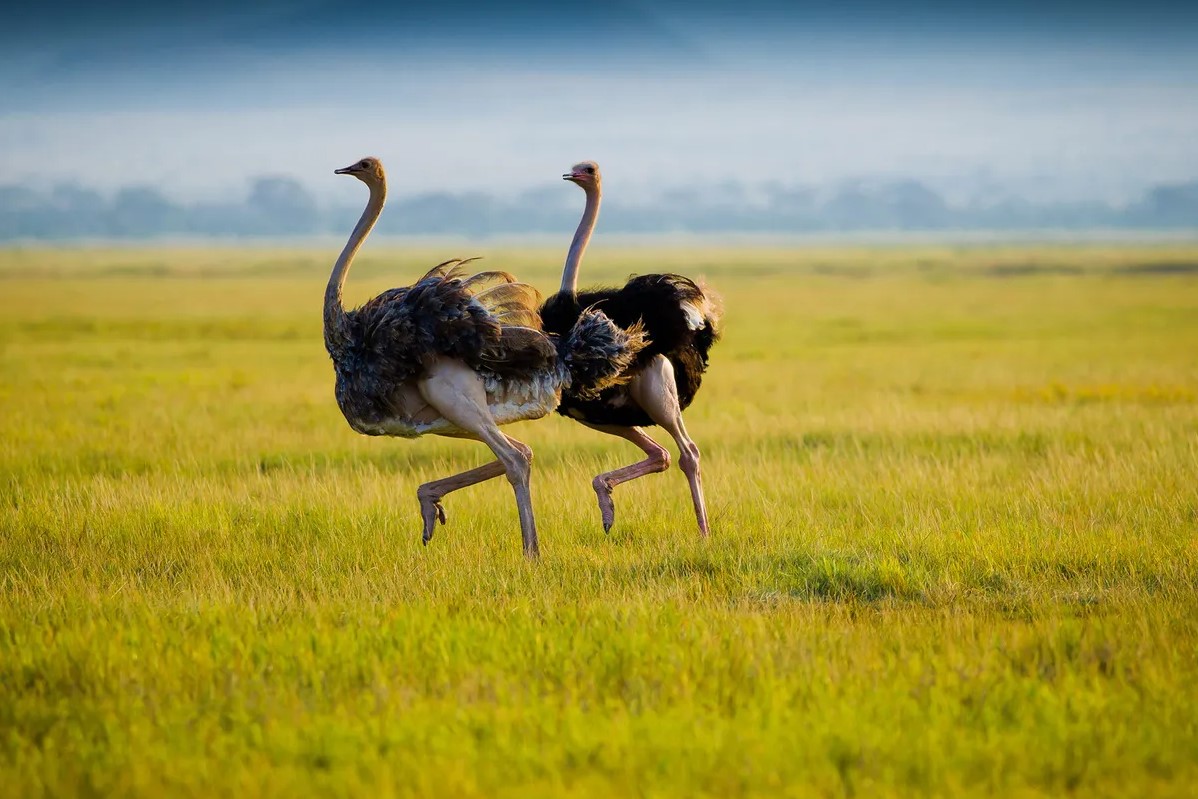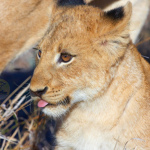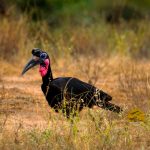The Ostriches of Uganda: The Feathered Giants of the Savannah.
Ostriches in Uganda – Struthio camelus. Ostriches are the largest birds in the world, and for centuries, they have remained a source of fascination due to their enormously huge size, unusual behaviors, and intriguing adaptations; In Uganda, these grand birds form part of the different types of wildlife that play a great role in tourism and nature conservation; This article describes the different attributes of ostriches found in Uganda: their habitats, behavior, conservation status, and their importance to Ugandan culture and tourism.
Physical Characteristics of Ostriches.
The ostriches of Uganda are extremely identifiable by their grand size, standing as tall as 9 feet and weighing anywhere from 220 to 350 pounds; They possess long necks, long legs, and huge, muscular bodies that enable them to run up to 45 miles per hour; Their plumage does vary: males are striking with black feathers and white wing tips, while the females in general are brown and gray, a colouring that assists in camouflage against their potential predators.
The eyes are large, with up to a diameter of 2 inches, giving excellent visual acuity to spot predators from afar. Their strong legs can run not only fast but may be life-threatening should they be used in defense against an attacker.
Habitat and Distribution of Ostriches in Uganda.
In Uganda, ostriches are mainly found in the semi-arid regions of the northeastern part of the country, especially in Kidepo Valley National Park and its environs. Such an area just presents the bird with open grasslands, scrublands, and scattered woodlands that ostriches like. The various ecosystems within the park, besides being less disturbed, create an enabling environment for these flightless birds.
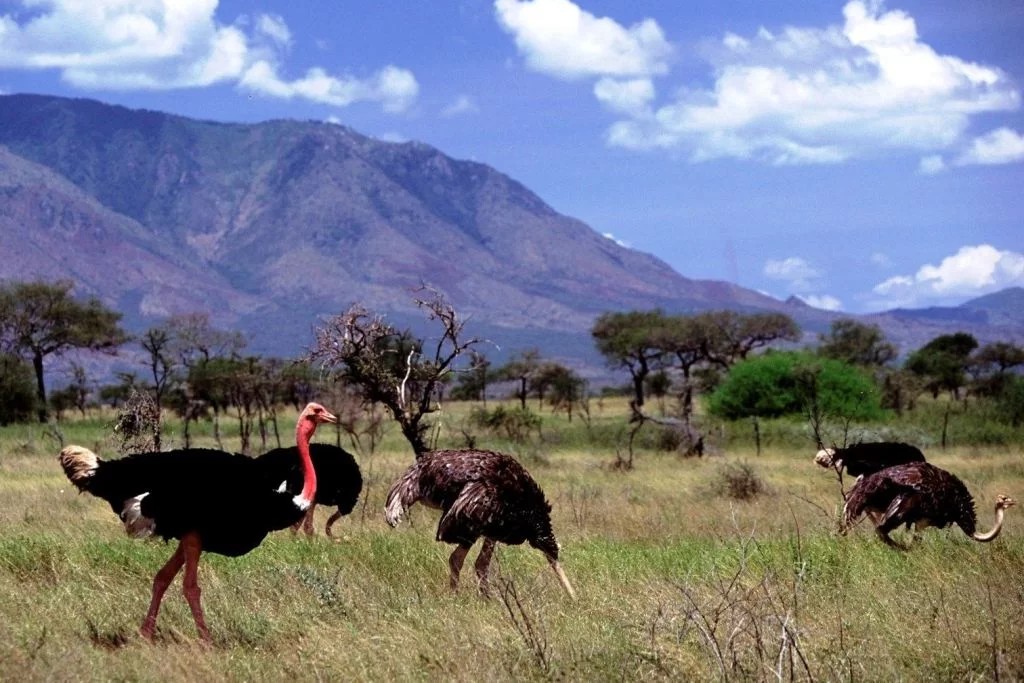
Behavior and Social Structure.
It is a social bird, often appearing in groups or flocks of as few as a couple of individuals and reaching over a dozen birds. This bird has an intricate social hierarchy, one which regularly practices communal nesting. You usually find 15 to 20 eggs in the communal nest, wherein females deposit their eggs; both males and females take turns incubating them.
These birds have very peculiar courtship behaviors, such as intricate dances, head bobbing, and continuous tooting. Males particularly vocalize with a booming call to advertise themselves to females and establish dominance within the flock.
Dietary Habits of Ostriches
In Uganda, ostriches are omnivores with an approximate diet that is primarily made of plants, seeds, fruits, and small insects once in a while. Their digestive system is very efficient; it can utilize as many nutrients as possible from their feeds. Interestingly, these birds do not have teeth but instead use their strong beaks to tear vegetation and stones, which further help in the grinding of food in the gizzard.
Conservation Status.
Currently, the IUCN classifies them as of Least Concern, but they are threatened by habitat loss, hunting, and human-wildlife conflict. In Uganda, there is protection for these magnificent birds through conservation, especially within national parks and reserves.
Kidepo Valley National Park is an important haven where ostriches can live freely in their natural environment. Other local conservation groups, on their part, are increasing consciousness and awareness in protecting such birds and their respective ecosystems.
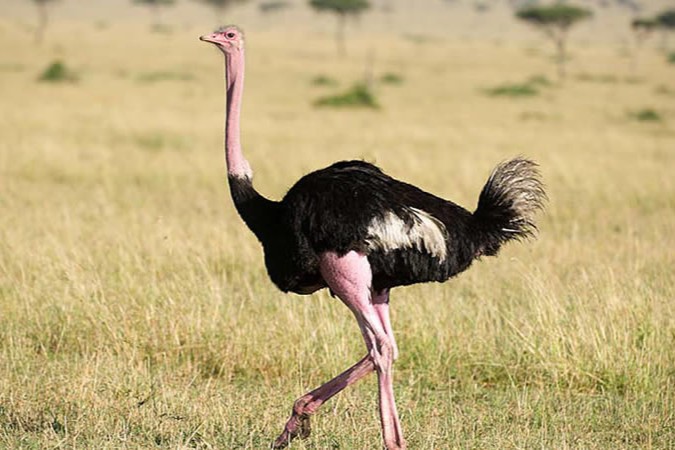
The Role of Ostriches in Ugandan Culture and Tourism.
Ostriches are important culturally, as well as part of the tourism package in Uganda. Their peculiar appearance and behaviors lure wild-life lovers and tourists, hence commanding better presence in national parks. On bird-watching tours, one can often also see ostriches in naturalistic settings, providing the visitors with an unforgettable experience.
They also carry cultural significance for some Ugandan communities. This bird does crop up in some proverbs, folk tales, and myths as a sign of strength and survival. The feathers of the bird are used in traditional crafts and ceremonies, adding to their cultural relevance.
Remarks on Ostriches in Uganda.
Ostriches are magnificent birds that add to the critical mass of Uganda’s wildlife diversity. Their interesting behaviors, amazing physical attributes, and cultural importance make them an asset to the natural heritage of the country. As conservation goes on to save these magnificent beasts, the ostrich will remain cardinal of strength and beauty on the Ugandan savannah, bringing in people from all over the world to witness their grandeur in the wild. Whether observed in the wild or celebrated in local culture, ostriches are indeed special in Ugandan biodiversity and tourism landscapes.


